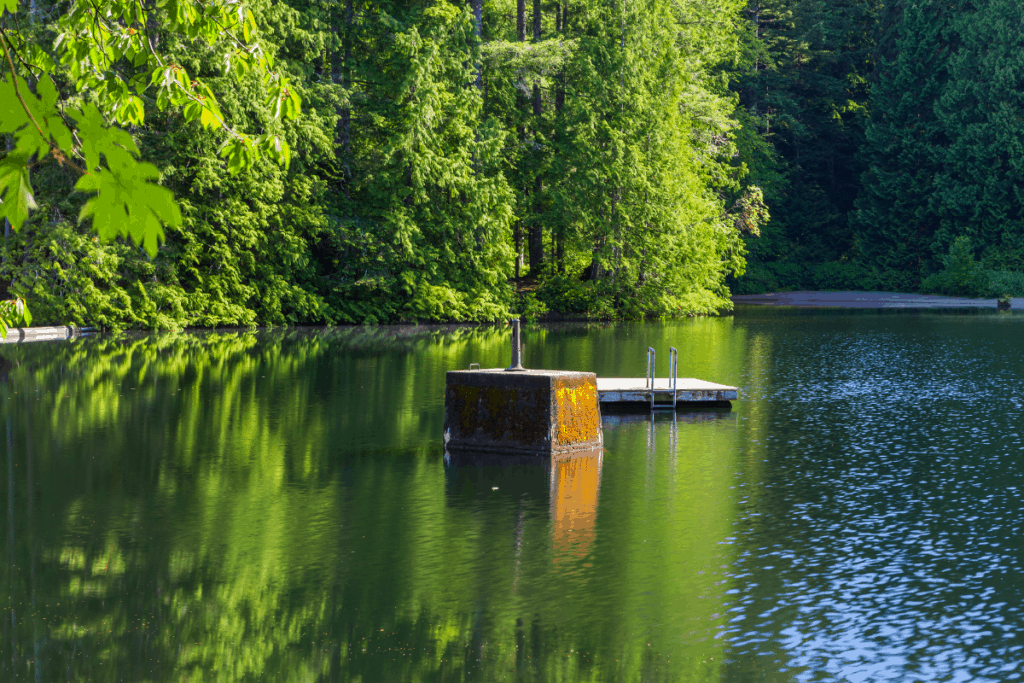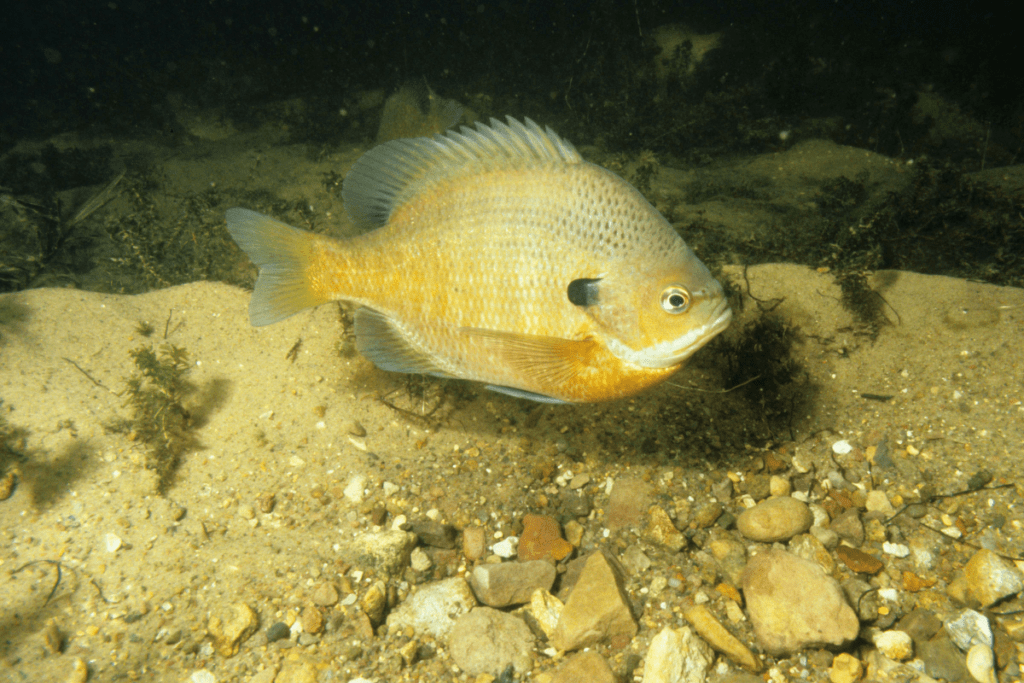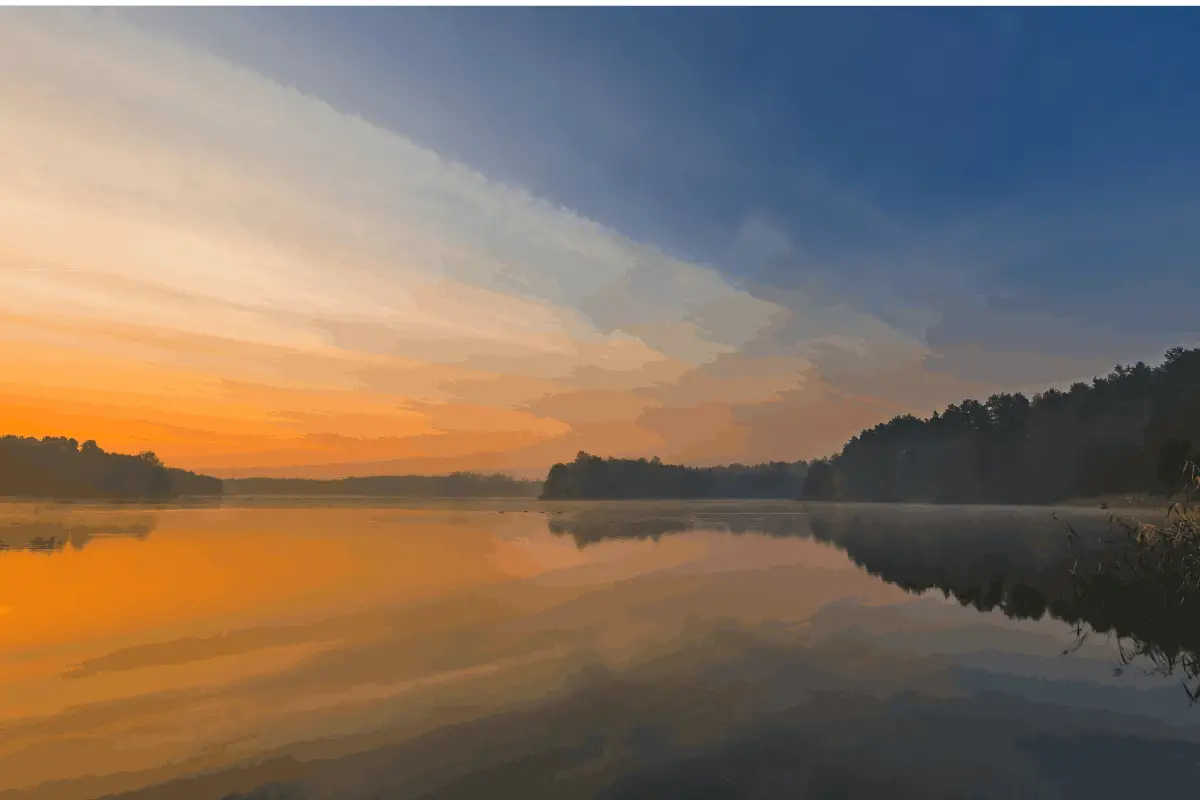Like all creatures, bass relate to their surroundings, food, and the time of the year. Having a basic understanding of these factors will allow you to find bass quickly no matter what body of water you are fishing.
To find bass quickly on new water, the first thing to consider is the season. Bass are typically shallower in the spring and fall and deeper during the heat of the summer and cold of the winter. Bass also relate to cover and structure. They want to feel safe, yet have quick access to food. Locating the thickest cover you can find usually results in finding bass.
The best bass anglers have compiled years of experience from these three factors: season, surroundings, and food source. In this article, I will go over each of these areas so you can narrow down where to start looking.
Seasons for Bass Fishing
We think of seasons based on spring, summer, fall, and winter. In the bass fishing world, water temperature is the most important factor.
| Winter Bass Fishing | 49° and cooler |
| Spring Bass Fishing | 50° – 69° |
| Summer Bass Fishing | 70°+ |
| Fall Bass Fishing | 69° – 50° |
Winter Patterns
When the water is below fifty degrees, the majority of bass will pull off of shallow cover and head to deeper water. Depending on the water you fish, this may be ten foot in a pond or forty feet in a larger lake.
There are three places that I look at when trying to target winter bass.
First, head to the absolute middle of bays, creek arms, and channels. If you are pond fishing, this would be the deepest portion of the pond. Small river and stream fishing means the bass will head to the deepest hole they can find.
Most of the time, the bass will be on the bottom. In fact, they may be so tight to the bottom that it is almost impossible to distinguish them from the surrounding mud on your graphs.
The second place I look is around rock. If a body of water has good rock, then it will likely hold bass all winter long. Rock warms up and then radiates the sun’s energy back out. Winter bass will hold on rock throughout the cold months.
The third place to check is along hard vertical structure. Dock pilings, piers, and other man-made objects are excellent for wintering fish. Like rock, it warms up and radiates that heat back out.
Spring Patterns
Once the water breaks the fifty degree mark, bass will start to move out of their winter haunts and think about the spawn.
Look for typical spawning areas on the north bank of any lake, pond, or river. This side of the water will warm up first and draw the bass to it. Smallmouth will bed first and have been known to actively spawn when that water is around sixty degrees. Largemouth like it a little warmer. Sixty-five and up will get them going.
The smaller males will be the first ones up from the depths. They will fan out beds and wait for the larger females to approach.
In most parts of the country, the spawn will last a solid month. Once the water temps reach that seventy degree mark, you can count on the beginning of summer fishing.
Summer Patterns
The warm months will find bass both shallow and deep. I tend to find the better fish deeper, but some fisheries, like Grand Lake of the Cherokees, will hold really nice fish shallow even on the most blistering hot days.
In the summer, you can fish to a style that suits you and usually catch some on most days, but what about catching a bunch of fish? That is where a search bait can really help.
During the heat of summer, bass tend to school up. You may fish for several hours and not get a bite and then suddenly you catch one. If you fish that area thoroughly you may end up having the day of a lifetime.
Search baits allow us to find fish and then, if needed, switch do a different lure to cover an area with more directed attention. There are two criteria for search baits: 1) they are fished horizontally in the water column 2) you can make long casts with them
Fall Patterns
The fall can be a crazy time to fish. There are days when you will think it is the easiest sport on the planet, then there will be other days that totally baffle you.
I have found that this is the one time of year when I pay less attention to structure and cover and focus mainly on where the bait is at.
Let me explain, the bass are gearing up to really take in some calories in preparation for the cold winter months. I have seen entire schools of largemouths suspended in the middle of a huge reservoir not relating to any structure at all.
What were they relating to? A giant school of threadfin shad. These bass were hanging out under the shad and following them anywhere they went.
My number one factor for success when fall fishing is food. Find the food and you will find the bass. Keep those eyes open. You may see shad flicking the surface in the back of a cove, you may see gulls circling in the middle of the lake, there may be great blue herons all over a certain bank, these are the things to look for.

Surroundings
What type of structure and cover are the bass hanging on?
First, I need to define each. Structure is lake composition. The bottom. The lake or river bed. Structure is the geographical feature that is holding the water.
Cover is anything on that structure. This could include trees, weeds, docks, etc.
Structure is what bass will relate to when changing or hanging out at certain depths. For example, a long tapering point is a great place to find bass because they can easily follow the structure to shallow or deep water.
A creek channel in a reservoir is good for the same reasons. In a few feet, bass can drop into the deeper creek channel or move up and out of it to lurk in shallow water.
When first looking for bass, I will pinpoint the type of structure I want to hit and then look for cover that is on that structure.
If I find a nice rocky point, I will look for anomalies on that point. Is there a single stump or two? Is there a dock sitting right on it? Are there weeds cutting across it?
Then let the fish tell you where they are at.
In other words, if you start catching fish on wood, use that information to target other areas. If you are catching them on the inside weedline between deep water and the shore, use that to target similar locations.
Bass will change their positioning throughout the seasons, month, week, and even the day. You constantly need to take the information they give you and apply it to the water you are on.
The more time you spend on the water the more experience you will have to pull from.

Food Source
The next thing that I am looking for when it comes to locating fish quickly on new water, is the food. Another way to think about it, is to locate some life.
If I see a bunch of shad either flicking the surface, or on my electronics, then I know that my odds go way up of catching some bass.
Do I see bluegills? Are there turtles? Are there shorebirds wading around? Are there flocks of gulls circling?
All of these are key indicators that bass are likely present. If I pull into an area and I see zero life, I pull that trolling motor back up and head somewhere else.
On one outing at the Mississippi River, I located a mud bank that had hundreds of crawdad holes. The water had dropped a bit, and the majority of those tunnels were exposed so I could see them.
I really slowed down and fished the area thoroughly.
We hammered them. It wasn’t a fish every cast, but it was still a nice fish every 7-10 casts. Finding that food source is critical to unlocking the puzzle of how to locate bass quickly on new water.
Final Thoughts
If you take these three factors into consideration: season, surroundings, and food source, you are well on your way to having a great day on the water.
Pay attention to the subtle hints the bass are giving you in regards to these three key elements and the day is going to go well.
Good luck and be safe.

